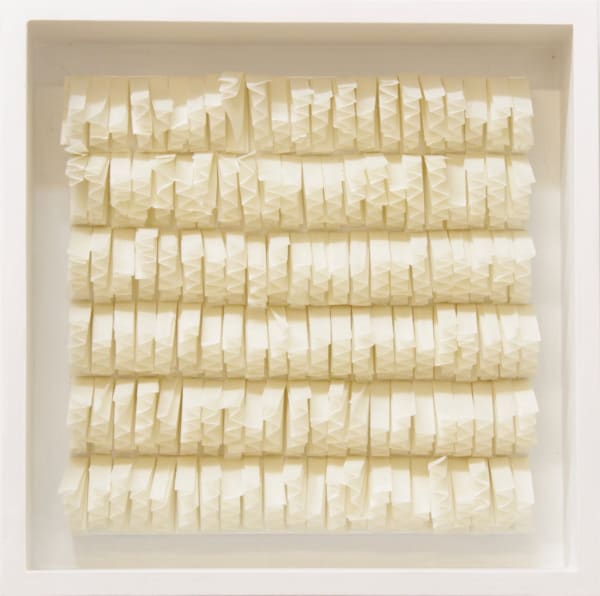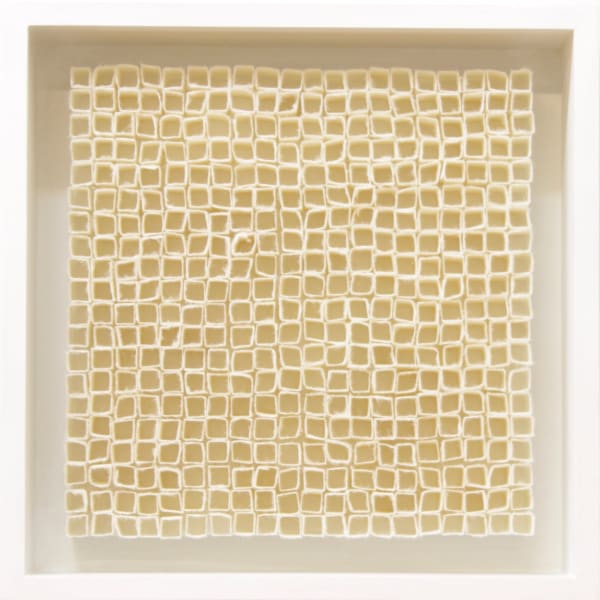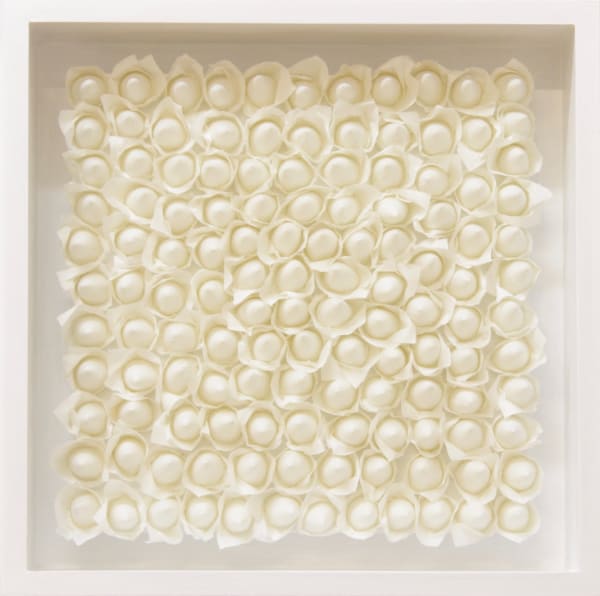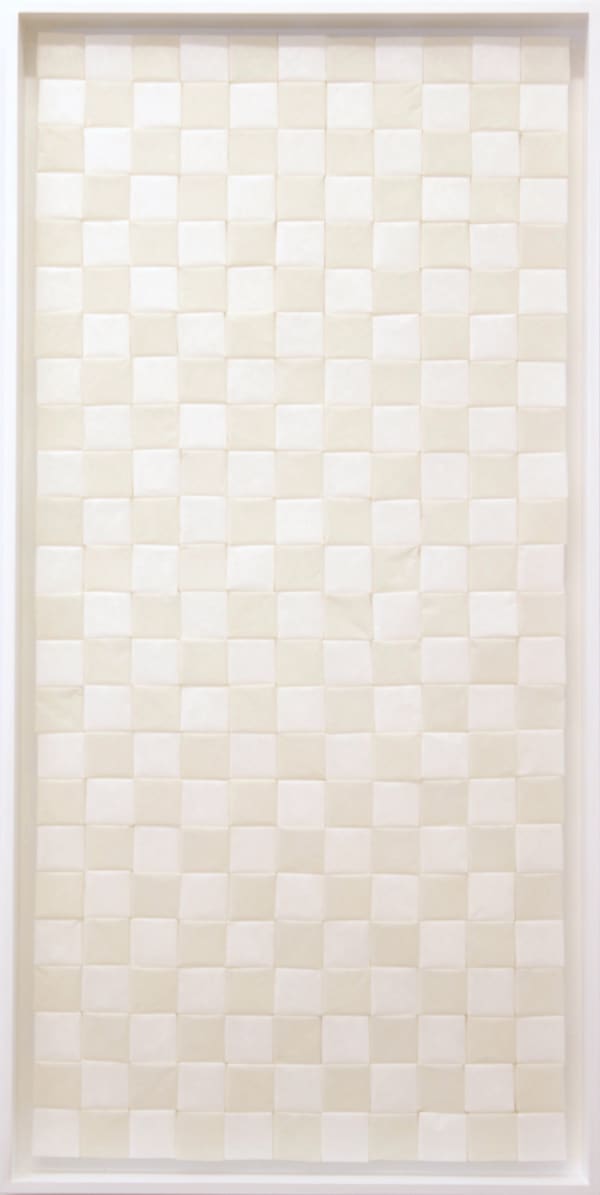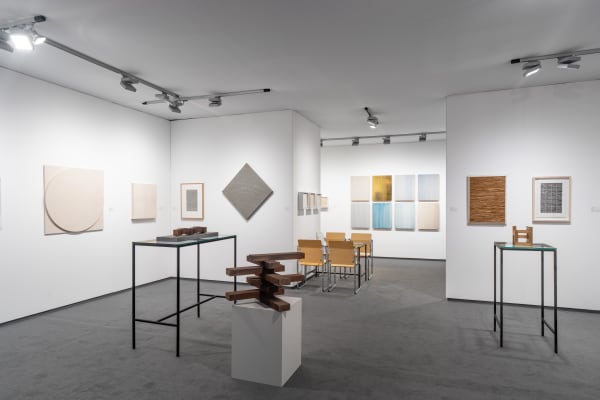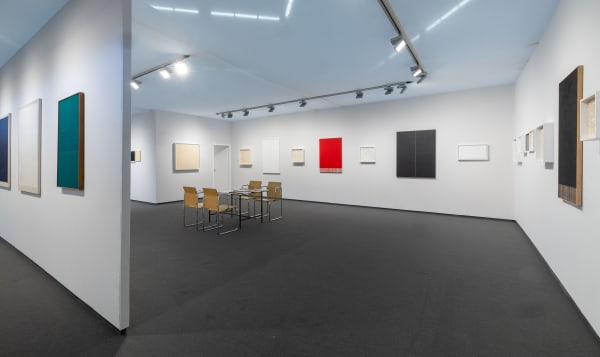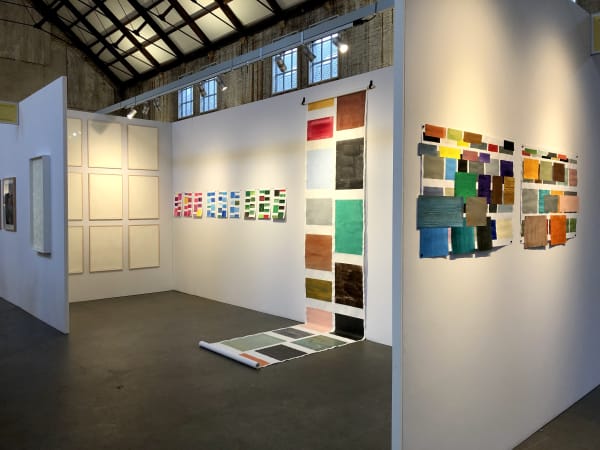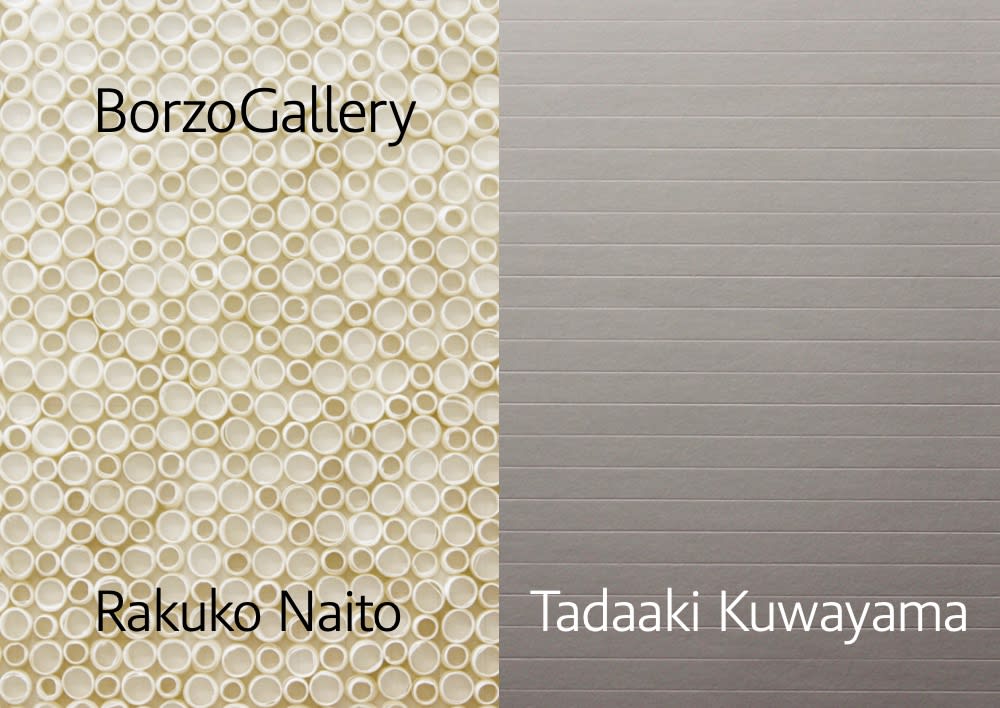Rakuko Naito Japanese-American, b. 1935
For the past three decades, Rakuko Naito has dedicated her artistic work to research into the malleability and strength of kozo washi, a traditional Japanese paper. Naito has experimented with many different methods and materials, all with the same dedication to organization and inventiveness.
During the early 60s, after moving from Tokyo to New York, she made optical art and experimented with acrylic paint, spray paint and masking tape. Eventually she found her style in the delicate, monochromatic paper assemblages that she still makes. With an innate preference for order and structure, Naito joins a circle of artists such as Mel Bochner, Eve Hesse and Sol LeWitt. Naito: "I feel that natural forms and structures have a reality that cannot be competed by trying to paint or draw by hand. I try to experiment and manipulate materials to create my own world.” As a result, Naito has found a niche that offers room for her ideas that lie in the middle of our notion of 'drawing' and 'sculptures'.
Naito, born in Tokyo, Japan, studied at the Tokyo National University of Art. After graduating, she moved to New York in 1958, where she has been living and working ever since. Naito's first solo exhibition was in 1965 at the World House Gallery in New York. Naito's work is represented in numerous galleries and public collections in the United States, Europe and Japan, including the Kemper Art Collection (Chicago), Miami-Dade Community College (Miami), The Larry Aldrich Museum (Ridge Eld, CT), the Roland Gibson Art Foundation (SUNY Potsdam) and the Davis Museum and Cultural Center at Wellesley College, Massachusetts. She was an artist in residence at the Josef and Anni Albers Foundation in 2003. In 2016, the Karuizawa New Art Museum (Karuizawa, Japan) dedicated a solo exhibition to her work.
-

PAN Amsterdam 2025
Stand 36 1 - 9 Nov 2025Ben Akkerman | Armando | Charlotte Caspers | Ad Dekkers Hans van Hoek | Rakuko Naito | Jan Schoonhoven Geer van Velde | Carel Visser | André Volten | herman...Read more -

TEFAF Maastricht 2024
Stand 430 9 - 14 Mar 2024Ben Akkerman | Armando Constant | Ad Dekkers Daan van Golden | Jean Gorin Ewerdt Hilgemann | Hans van Hoek Tadaaki Kuwayama | Bart van der Leck Piero Manzoni |...Read more -

Recent acquisitions
20 Jan - 16 Feb 2024Borzo starts the new year with a group exhibition of recent acquisitions. In the front room a group of artists who have a relationship with each other both artistically and...Read more -

PAN Amsterdam 2023
Stand 36 18 - 26 Nov 2023At PAN Amsterdam 2023, BorzoGallery and The Mayor Gallery proudly present a curated stand featuring three artists: TADAAKI KUWAYAMA | RAKUKO NAITO | TOMAS RAJLICH Tadaaki Kuwayama (b. 1932 Nagoya,...Read more -

Art on Paper Amsterdam 2019
Stand 36 26 - 29 Sep 2019Drawings that do not necessarily result in a painting, but do have a right to exist outside the studio, are called Kurzstrecken by Ronald de Bloeme . It is a...Read more -

Lang niet gezien, nog niet gezien
6 Apr - 1 Jun 2019A group exhibition featuring fifty key artworks from the Borzo collection, spanning approximately the past fifty years ; from Leon Adriaans to Bob Bonies, from Jan Schoonhoven to Rakuko Naito,...Read more -

Rakuko Naito & Tadaaki Kuwayama
6 - 28 Apr 2018'New Shapes of Color' / 'Vormen van de Kleur', (1966, Stedelijk Museum) first introduced the radical work of the American artist Tadaaki Kuwayama to the Dutch public. The exhibition was...Read more
